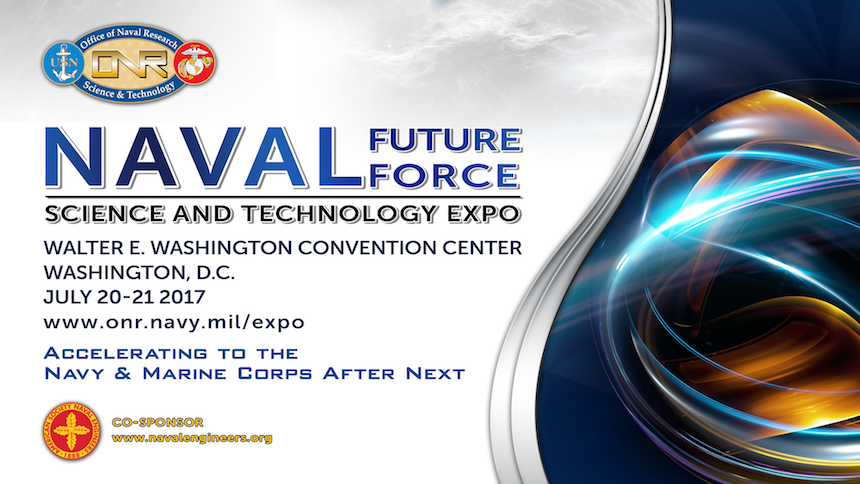
At the upcoming Naval Future Force Science and Technology Expo — to be held in Washington on 20-21 July — Chief of Naval Research (CNR) Rear Adm. David Hahn will announce a new strategic direction for the Navy’s science and technology and research and development programs.
As adversaries move quickly to advance their technological capabilities, Hahn’s vision supports Chief of Naval Operations Adm. John Richardson, who has said the pace of technology development and delivery in the United States Navy and Marine Corps must accelerate in order to maintain the technological edge for U.S. warfighters.
“We have a great opportunity to supercharge the engine of naval research,” said Hahn. “From discovery to deployment, innovative U.S. naval technology has been essential to mission success. We’re going to ensure that continues.”
ONR says that details of the CNR’s guidance will be unveiled to conference attendees via a widely anticipated new document on the way forward for naval research: “Naval Research and Development: A Framework for Accelerating to the Navy and Marine Corps after Next.” Conference attendees will get the first look at this construct to speed new technologies from basic research into finished products, and into Sailor or Marine hands.
Senior naval leaders see the new Framework as a way to bring together in new ways all the central players in naval research, including government labs, academia and industry
“Clearly a goal of the Framework is to accelerate what we do,” said Dr. Walter Jones, executive director of the Office of Naval Research (ONR). “For industry and innovators, the Framework focuses naval business decisions around common, clearly-defined priorities.”
Having those priorities, and involving innovators in the discussion earlier, will increase the likelihood that a business product will make it to the finish line that is, increase the chances research will make it to full-scale production.
“For industry, time is money,” noted Jones. “This Framework will make doing business with the Navy and Marine Corps easier.”
Meanwhile, members of the academic community will also get a first look at the Framework at the Future Force Expo. The outlined new priorities should help provide focus for academics in determining how research can better meet the needs of Sailors and Marines.
“The Framework recognizes the importance of enduring, basic research programs,” said Dr. Larry Schuette, ONR’s director of research. “However, it will also help the academic community to align various research efforts with the naval mission.”
Taken together, the Framework for the first time represents a shift to a full-spectrum view of research, development and acquisition for the naval future force.
An interview with Rear Adm. Hahn can be seen here. He invites those who haven’t registered yet to be part of the conference, and part of the conversation for the future of naval research.
“Come learn how we’re working to support our nation’s men and women in uniform,” said Hahn. “We must be first to field with decisive technologies. We need to accelerate every aspect of what we do — our future maritime superiority is at stake.”
Learn more about the Future Force Expo.

